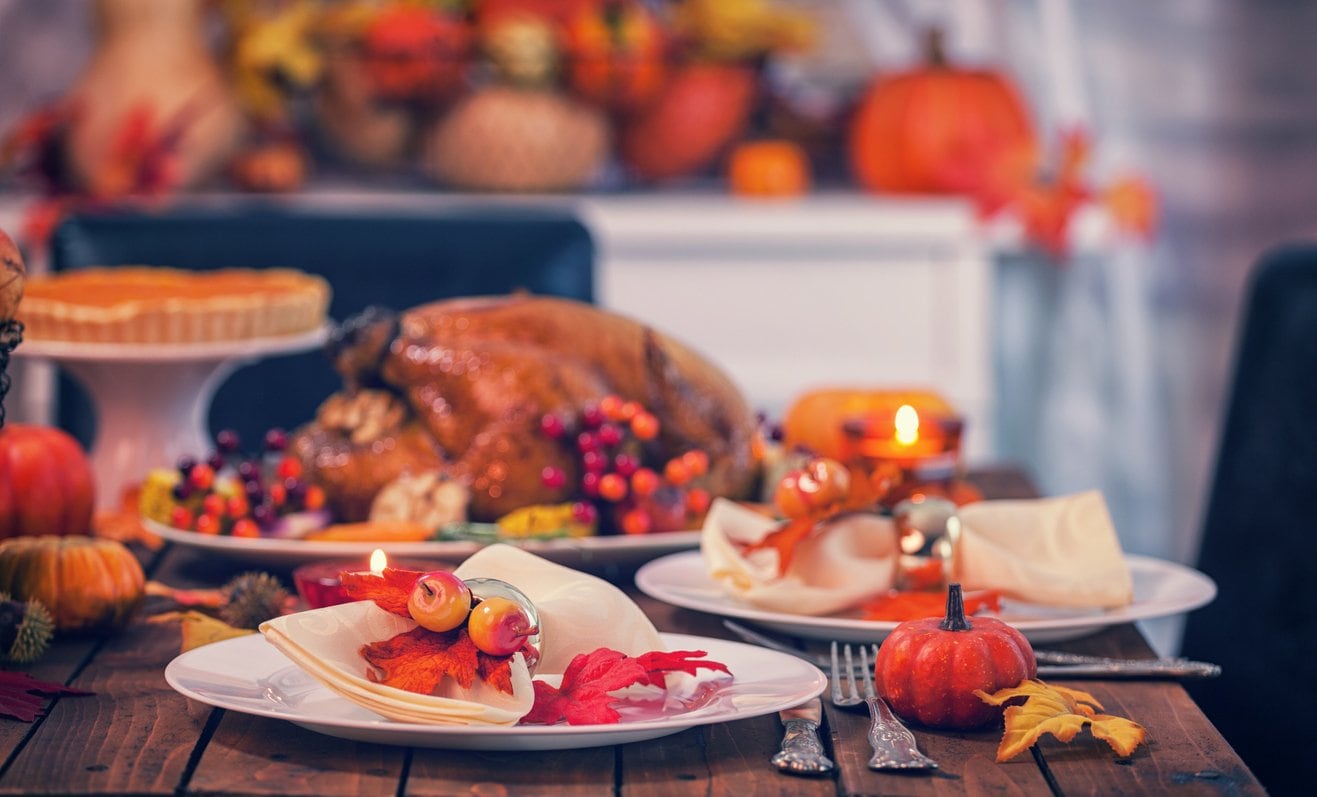Diet and Diabetes: Planning for Thanksgiving

One of the ways to help control diabetes is through your stomach. What you eat breaks down into the nutrients your body needs to fuel itself. Because your body has trouble regulating blood sugar (blood glucose level), the food you eat, when you eat it, and how much you eat all play into keeping your body balanced. As registered dietitians, we work with many diabetic patients to help create healthy meal plans, teach you about the right foods for your body and how to read a nutrition label.
Every diabetic patient has unique needs for maintaining a target glucose level. Because of this there is no "one size fits all" diet plan. With Thanksgiving around the corner, understanding healthy food choices and creating a meal-time schedule will help you have better control over your condition. Here are some basic tips that you can use to help you get started with your meal planning.
Plan Ahead
Turkey will likely be served, but knowing the side dishes on the menu will be helpful for you to plan ahead. You should monitor the amount of sugary foods and carbohydrates you're eating throughout the day so you can keep your glucose levels on track. It may even be helpful to bring a side dish you know you can eat and enjoy without having to think too much about how it's impacting your blood sugar. Non-starchy vegetables like broccoli or green beans are great options for side dishes.
Avoid Excess
Living with diabetes means that every day you'll need to avoid overeating. Generally, Thanksgiving is a holiday when many Americans eat too much. To help you make healthy food decisions, the American Diabetes Association recommends the plate method for creating proportioned and balanced meals that fill you up. Half your plate should be non-starchy veggies, like carrots, cabbage, Brussel sprouts, or cauliflower; one quarter of your plate should be a lean protein like turkey; and the other quarter should be carbohydrates like potatoes, squash, or beans. It's also best to avoid alcohol or sugary drinks. Stick with options like water or unsweetened tea or coffee.
Check Your Blood Sugar
Make sure to check your blood sugar throughout the day. If you're eating more than usual or not eating the foods that you normally would this is essential to making sure you don't experience high blood sugar and the symptoms that accompany it. A short walk might help you break up the day and bring your levels back to normal.
Have Dessert
Yes, you can indulge (a little)! This is why planning ahead, carb counting, and knowing the types of food that spike your blood sugar are so important. If you've avoided eating breads, stuffing, and casseroles during dinner, then you should be able to have a slice of pie for dessert. Aim for sugar free sweets or an option like pumpkin pie or pumpkin bread to keep your carb count low.
It's easy to forget that the holiday season isn't just about the food. While the pandemic might make life different this year, try and focus on what brings you joy during the holidays, whether it be your family and friends, your home, a good book or watching movies. When your perspective changes, so does your focus, and this is what will help make it easier to cope with the challenges of diabetes.
Looking for a healthy diabetes-friendly meal? We've got you covered - check out some of the meals our nutritionists put together for you. Make sure a nutritionist or registered dietitian is part of your diabetes care team. Talk to your doctor about getting a referral and call 508-236-8039 to learn more about nutrition counseling.